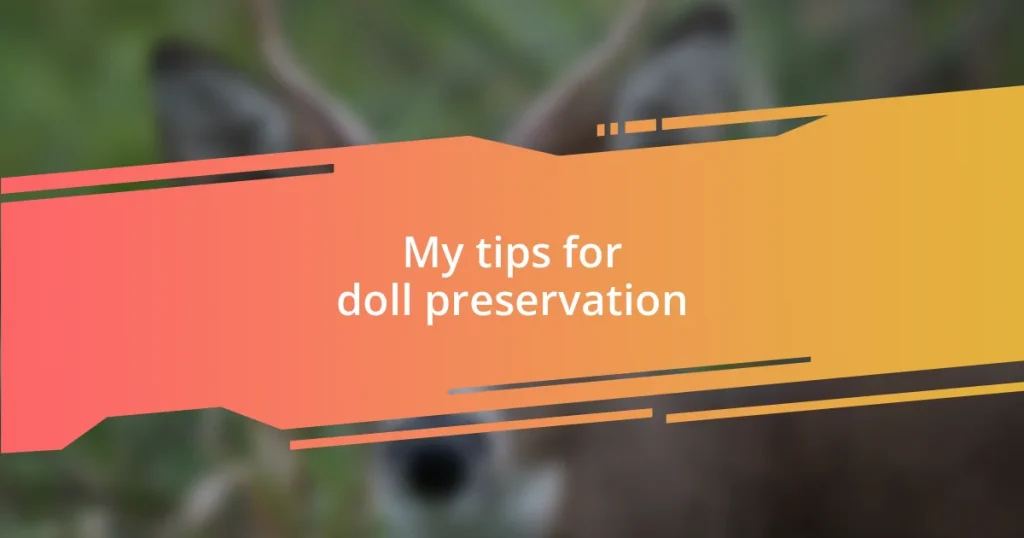Key takeaways:
- Natural dyes offer unique colors and a deeper connection to the craft, emphasizing sustainability and cultural heritage.
- Researching local dye sources and connecting with artisans enriches the dyeing experience and fosters community engagement.
- Proper dye application and preservation techniques are crucial for maintaining fabric vibrancy and ensuring long-lasting beauty.
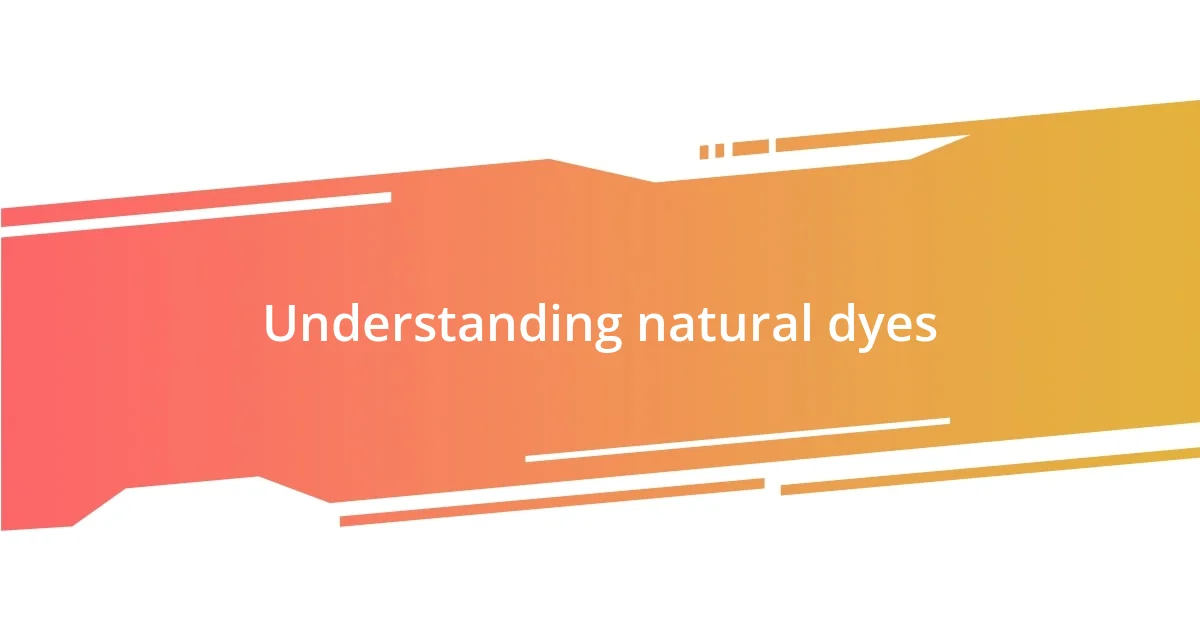
Understanding natural dyes
Natural dyes are fascinating because they transform the ordinary into the extraordinary. I remember the first time I used marigold flowers to dye fabric; the vibrant yellow hue felt like capturing sunshine in a bottle. Isn’t it amazing to think that the colors we see can come from something as simple as plants?
As I delved into sourcing these dyes, I discovered just how varied and complex the process can be. Some dyes, like indigo from the leaves of the indigo plant, require specific techniques to extract the color, while others can be achieved through steeping or boiling. Have you ever wondered how ancient cultures achieved such vibrant colors with natural materials? It’s a testament to their resourcefulness and understanding of the environment.
What struck me most was the emotional connection I formed with the materials I used. Sourcing these natural dyes meant trekking through gardens and fields, often becoming weeds in places less traveled. This journey opened my eyes to the beauty and intricacies of nature, and each new color was a discovery that sparked joy and creativity in my craft.
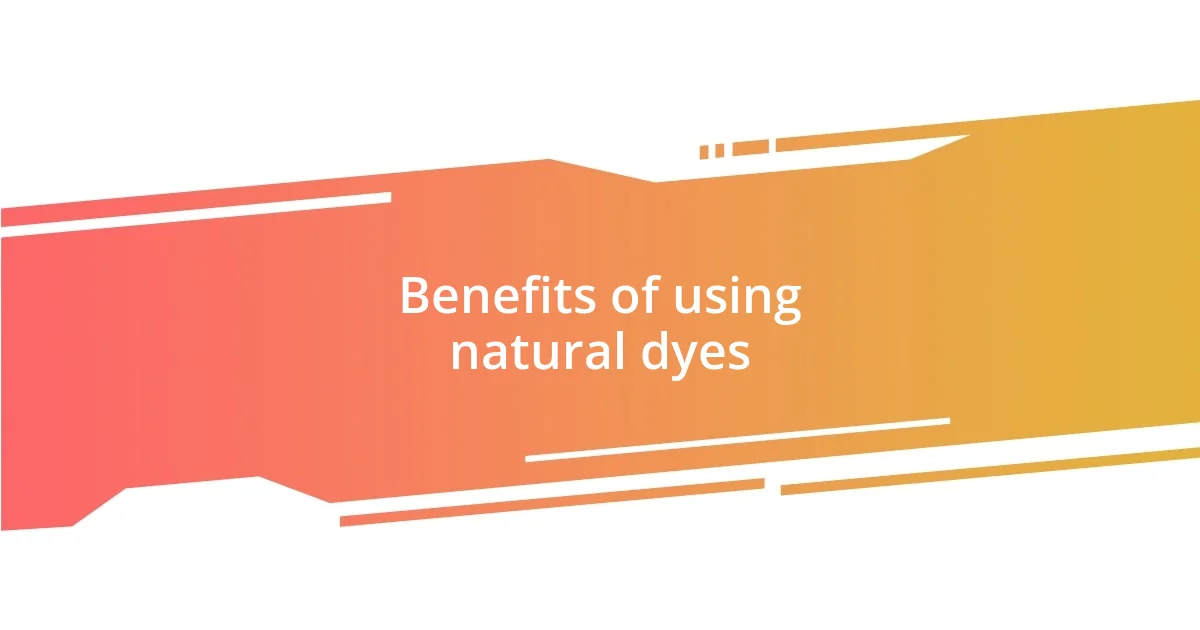
Benefits of using natural dyes
Using natural dyes brings a wealth of benefits that go beyond just aesthetics. Personally, I find that the experience of working with these dyes creates a deeper connection to my craft. Each color sourced from nature feels like a story waiting to be told, wrapping my dolls in more than just fabric but in the narratives of their origins. Unlike synthetic dyes, which often come with health concerns, natural dyes are usually safer and kinder to both the skin and the environment.
Here are some benefits I’ve experienced firsthand:
- Environmentally Friendly: Sourcing materials like vegetables, fruits, and plants reduces reliance on harmful chemicals that can pollute our waterways.
- Unique Colors: Each batch of dye is unique, offering a wide spectrum of shades and tones that can’t be replicated with synthetic dyes.
- Cultural Heritage: Using traditional dyeing techniques helps preserve age-old crafting methods and connect to various cultures and histories.
- Personal Satisfaction: There’s an immense joy in knowing that your work is a product of diligent sourcing, fostering creativity that resonates on a personal level.
- Sustainability: Many natural dye sources are renewable and can be cultivated sustainably, supporting a healthier planet.
The joy I felt, discovering how certain plants yield rich blues or soft pinks, made every moment spent crafting even more cherished. Each color has a unique history, adding an extra layer of meaning to the final product.
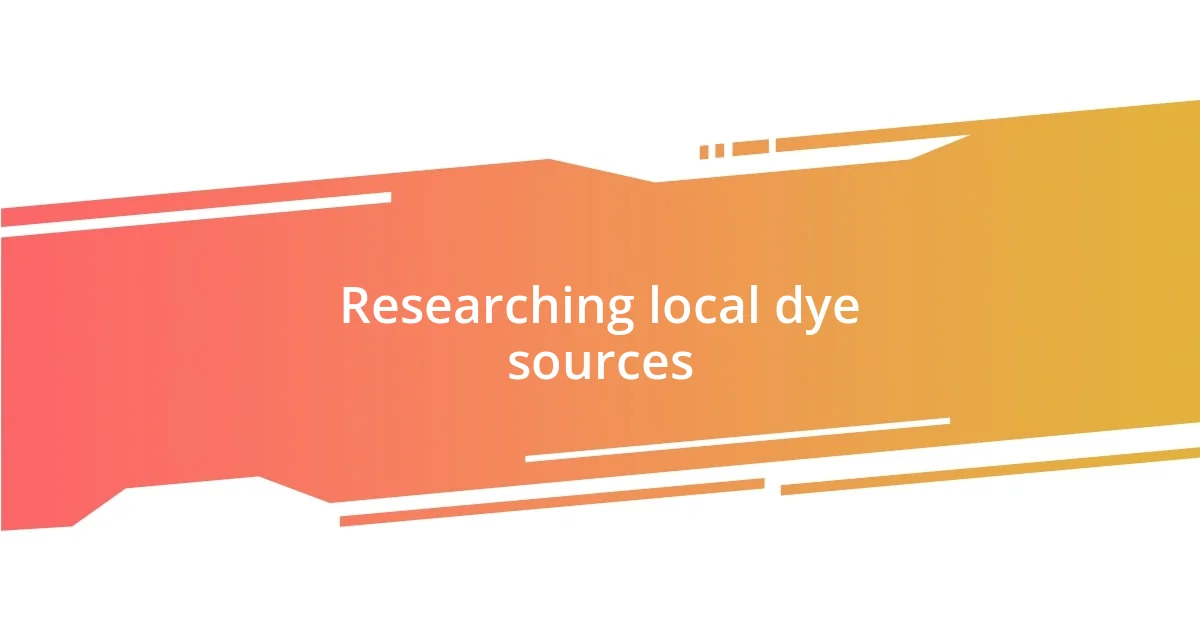
Researching local dye sources
Researching local dye sources was a thrilling adventure filled with surprises. One day, while wandering through a local farmer’s market, I stumbled upon a vibrant patch of red clover. I was amazed to learn that the flowers could yield a beautiful, soft pink dye. It was moments like these—discovering unexpected materials—that truly ignited my passion for sourcing natural dyes.
As I explored different locations, I found that local botanical gardens and nature reserves were gold mines for dye sources. For instance, I often collected rusty leaves from nearby oak trees. The resulting deep brown hue reminded me of cozy autumn evenings. Isn’t it fascinating how the environment around us can provide abundant inspiration? Each place has its unique offerings, which can vary by season and climate.
Throughout my journey, I realized the importance of connecting with local artisans and herbalists. Engaging in conversations with them opened my eyes to techniques and materials I had never considered. These connections transformed mere sourcing into a vibrant community experience. I often walked away with not just new dye sources but also stories that enriched my understanding of natural dyeing.
| Local Source | Dye Color |
|---|---|
| Marigold Flowers | Bright Yellow |
| Red Clover | Soft Pink |
| Oak Leaves | Deep Brown |
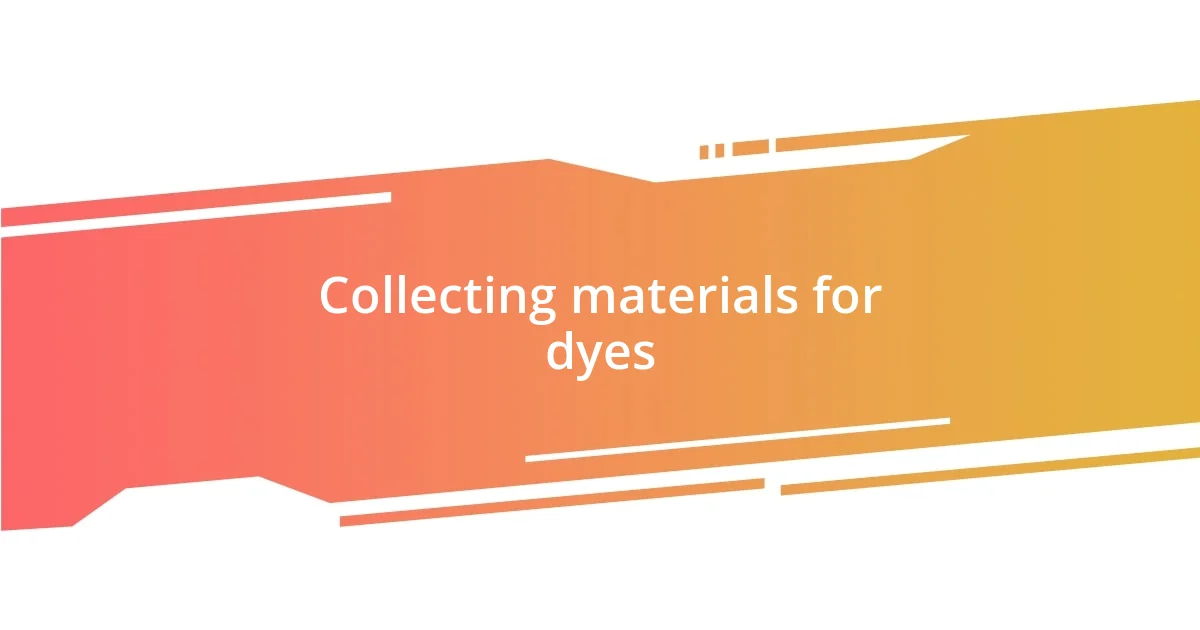
Collecting materials for dyes
Collecting materials for dyes can be a delightful and eye-opening experience. I remember my first attempt at gathering natural dye sources. It was a sunny afternoon, and I decided to explore my neighborhood. As I ventured into an overlooked garden, I spotted a patch of vibrant turmeric plants. To my surprise, I learned that the root could produce a stunning golden yellow shade. Isn’t it amazing how beauty lies in the most unexpected places?
As I continued my explorations, I discovered that everyday items could serve as dye sources too. One day, while preparing a meal, I couldn’t help but notice the rich skins of red onions I usually discarded. Something clicked, and I decided to experiment with them. The result amazed me—a lovely, warm reddish-brown dye that beautifully colored a doll’s dress. It made me reflect on how food waste can transform into art. Have you ever considered what you might be throwing away that could be repurposed?
It’s also essential to think about seasonal changes when collecting dye materials. I’ve learned that certain plants bloom at different times of the year, leading to a variety of colors. For instance, in late summer, I eagerly anticipated the blooming of indigo plants. The deep blue it produces is like a piece of the sky trapped in fabric. Every season feels like a new chapter in my dyeing journey, reminding me of the beauty of nature’s rhythm and the rich palette it offers for our crafts.

Techniques for extracting dyes
Extracting dyes from natural sources can be both a meticulous and creative process. I often start with a simple method called simmering, where I place the plant material in a pot of water and let it heat gently. I remember the first time I worked with avocado skins; after an hour of simmering, the water turned a soft blush—beautiful and unexpected! Have you ever had that moment when nature surprises you?
Another technique I’ve experimented with is fermentation, which can yield stunning colors while adding a unique depth to the dye. For instance, when I tried dyeing fabric with fermenting madder root, I was captivated by the vibrant red it produced after a few days. The bubbling liquid carried an earthy smell, and it felt like a little science experiment right in my kitchen. Isn’t it fascinating how a little patience can transform humble roots into something so lively?
I’ve also tried extraction with a mordant, which helps fix the dye to the fabric. My favorite was using alum with some goldenrod flowers I found on a nature walk. Watching the pale yellow bloom into a rich gold as it reacted with the mordant was a lesson in alchemy! It made me ponder, isn’t the journey from nature to fabric just as beautiful as the final color? Each technique unlocks a new layer of creativity and connection to the materials I work with.
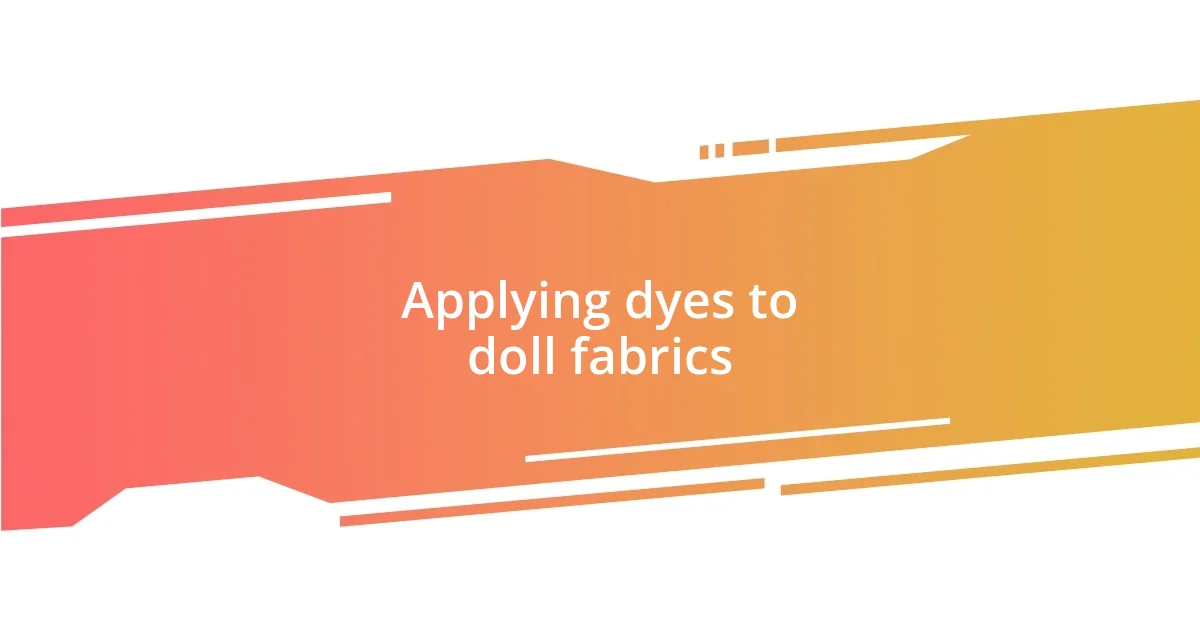
Applying dyes to doll fabrics
Applying natural dyes to doll fabrics can be a transformative experience. I remember the first time I dipped a piece of cotton into a pot of witch hazel leaves I had collected. As the fabric emerged, the rich, earthy green enveloped it like a warm embrace. It was mesmerizing to see how the color seeped into the fibers, morphing the ordinary cloth into something magical. Have you ever had a moment where nature just took your breath away?
My approach often involves pre-soaking the fabric to help the dye adhere better, a tip I picked up after a few trial-and-error sessions. I was eager to create a deep blue with my indigo extract, and soaking the fabric for an hour made all the difference. The vibrant color looked even better once it was rinsed, revealing a depth I hadn’t anticipated. It made me wonder, how do those little steps really change the outcome of our creative projects?
As I maneuvered through various dyeing methods, I found that applying dyes with different techniques could yield surprising results. One time, I used a sponge to dab some freshly made turmeric dye onto an old white dress. The splatter effect was spontaneous and joyful, capturing the essence of a sunny day in a single garment. Doesn’t it feel great when art becomes a dance between intention and creativity? In that simple act, I realized that applying dye is not just a task; it’s an exploration of color, texture, and ultimately, personal expression.
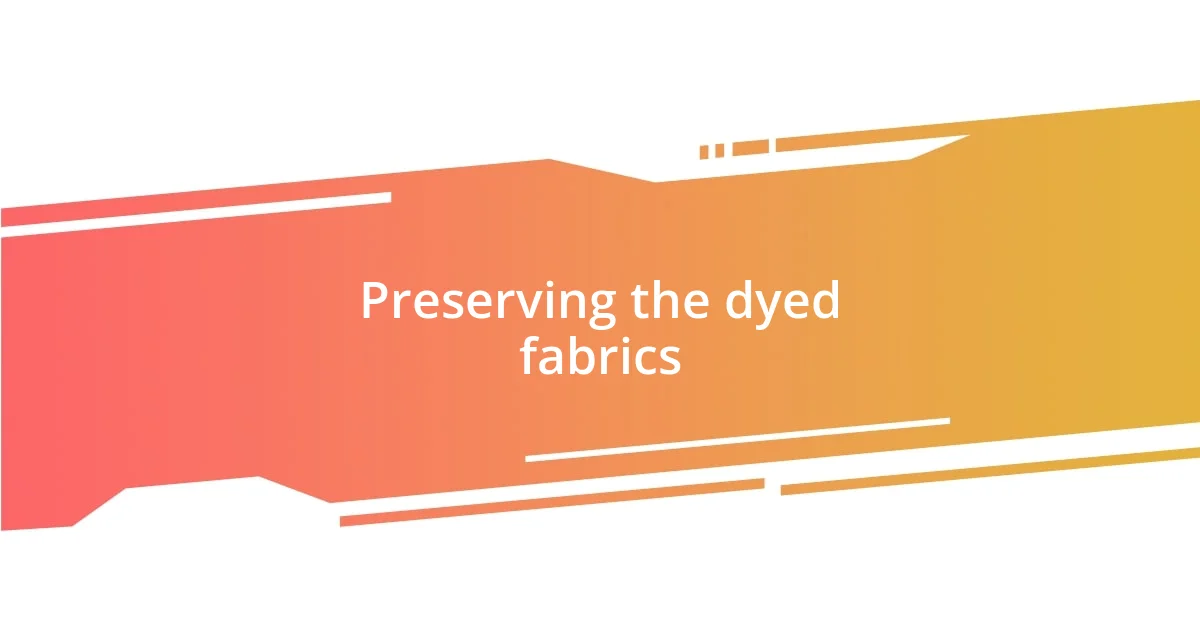
Preserving the dyed fabrics
To truly preserve the vibrancy of dyed fabrics, it’s essential to treat them with care after the dyeing process. I learned the hard way when I neglected to rinse out my turmeric-dyed cotton right away. The brilliant yellow faded over time, which was disappointing, to say the least! Now, I always take the extra step to rinse fabric gently in cold water immediately after dyeing to help lock in the color. Have you ever had to adjust your routine after a misstep? It can be quite the learning experience.
Additionally, I’ve discovered that storing dyed fabrics properly makes a significant difference in retaining their hues. I typically use acid-free tissue paper for wrapping, ensuring that the colors don’t bleed into one another. A poignant memory comes to mind – the excitement I felt when opening a well-preserved bundle of fabrics months later, only to find the colors as vibrant as the day I dyed them. It solidified my belief that thoughtful storage practices are vital. Isn’t it noteworthy how something as simple as wrapping can impact our cherished creations?
Lastly, I often consider the long-term care of dyed fabrics. Using natural dyes opens up a dialogue about sustainability. When I wash my dyed clothes or dolls, I use gentle, eco-friendly detergents. There’s something rewarding about choosing to care for these pieces sustainably, knowing that they represent not just my creativity, but a connection to nature. Wouldn’t you agree that every little effort towards preservation not only helps the fabric but also preserves the story behind it?















